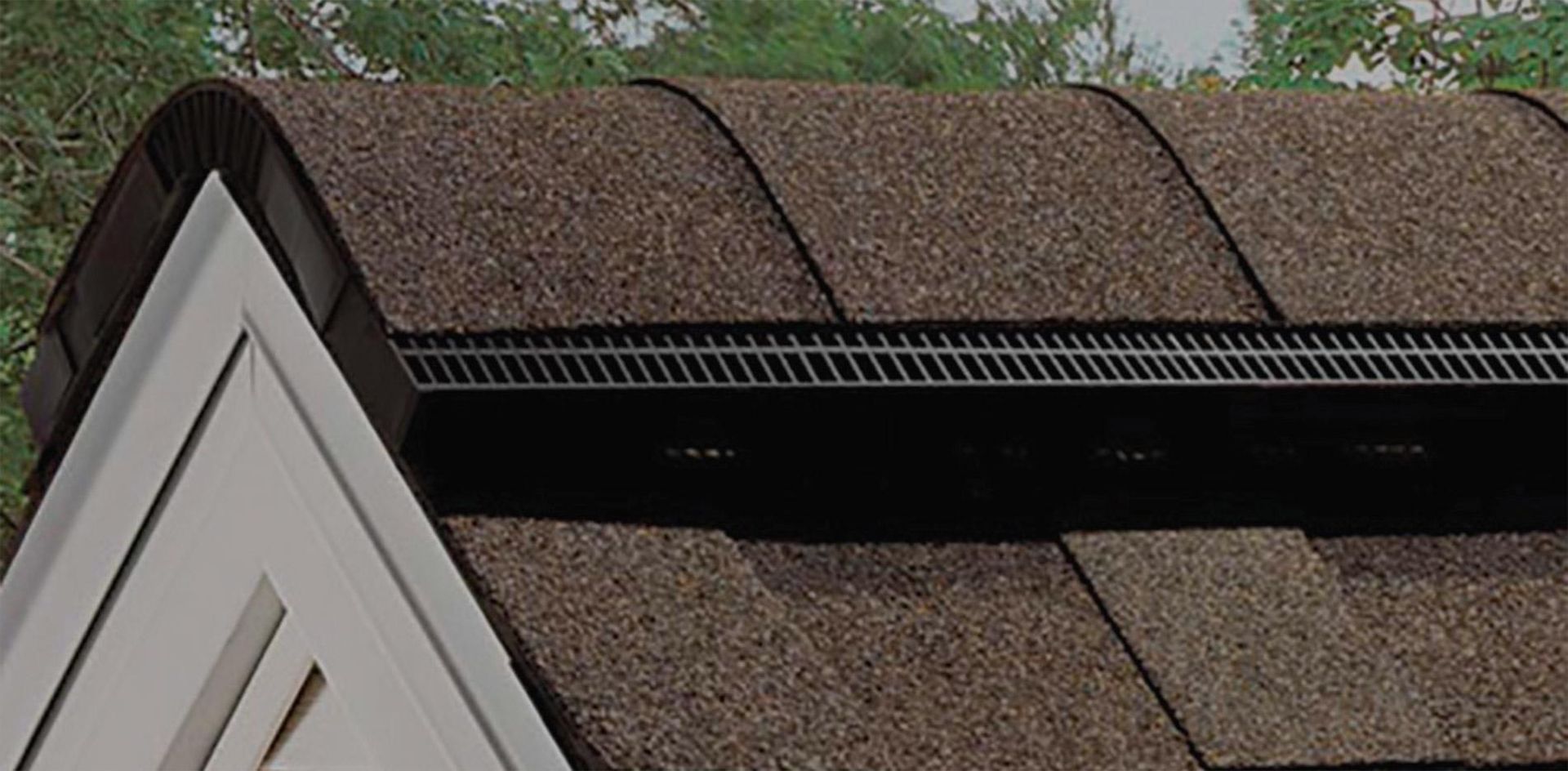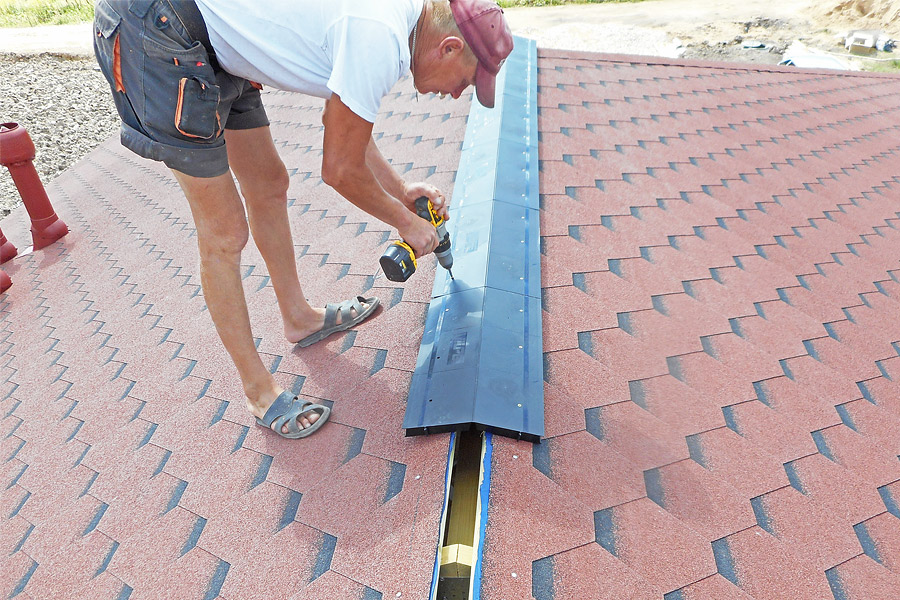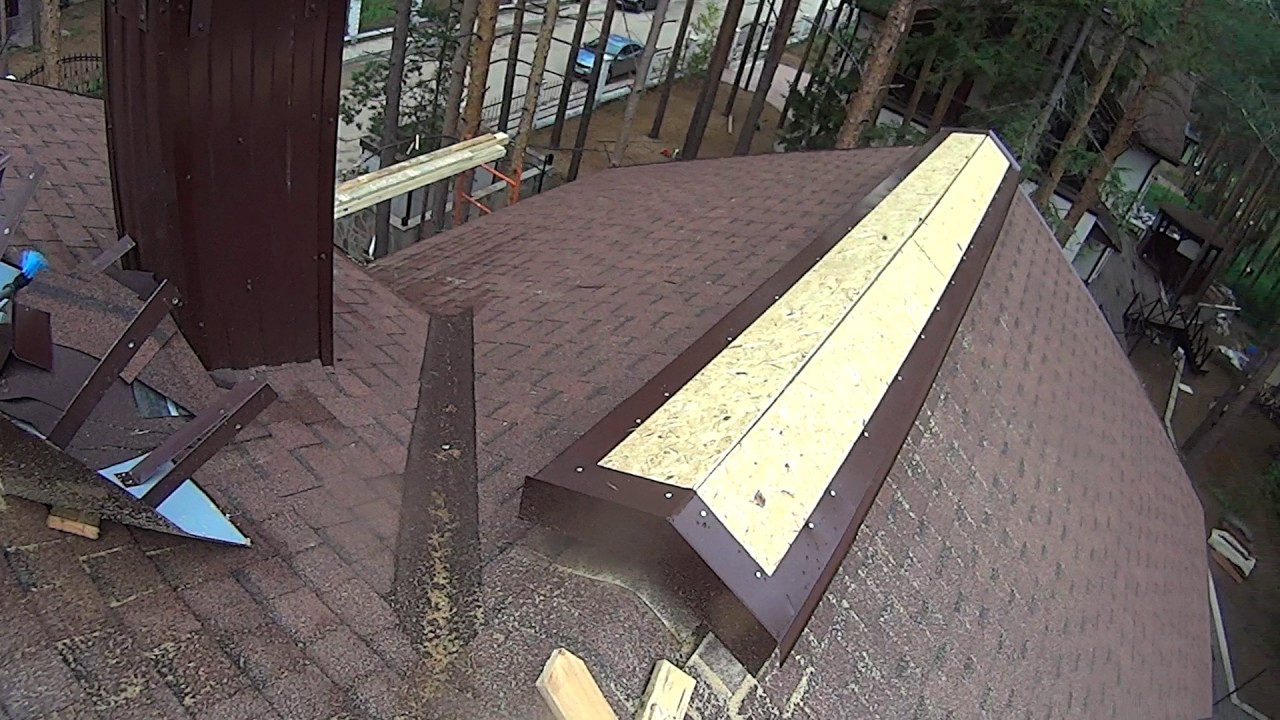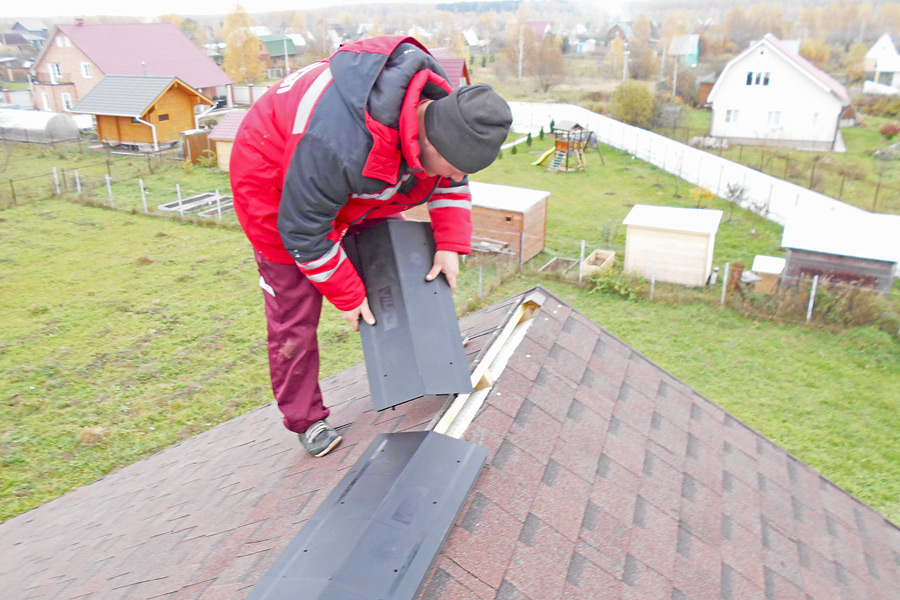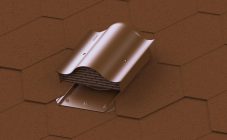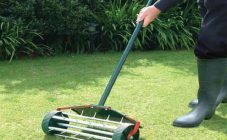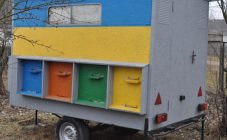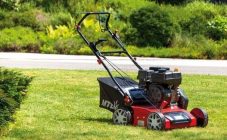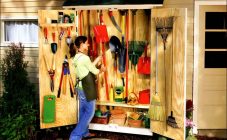Content:
A ridge aerator for a soft roof will help to extend the life of a roof covered with bituminous coating, soft tiles or ondulin. This type of roofing material degrades faster due to moisture getting inside the roofing cake. Installing an aerator will protect against moisture penetration inside the roof structure.
Why it must be dry under the roof
The inside of the roof structure of any building must always be dry. Otherwise, if moisture gets in, it will begin to collapse. Water enters the soft roof not only from the outside, but also from the inside, together with the rising warm air in the form of steam, and settles there as condensation on the structural elements. Due to the tightness of the soft roof, it cannot come out and is absorbed into the inner layers of the roofing cake.
By installing a ridge-type aerator designed for soft roofs, it is possible to bring it out in a vaporous state.
In the process of human life, droplets of water are released into the air along with breathing. The more people live in a dwelling, the higher the humidity in the house. In addition, water is released into the air during cooking, wet cleaning, during the use of water supply, taking a bath and other water procedures. Together with warm streams, moisture rises up, cools down and settles in the form of drops from the inside on:
- metal and wooden rafters;
- waterproofing and vapor barrier materials;
- the inside of the cover;
- fasteners.
Over time, the roofing layer begins to deteriorate due to the fact that, under the influence of temperature extremes, moisture destroys and deforms the entire roof from the inside. It destroys thermal insulation and waterproofing materials, as a result of which heat leaves the house faster, and the roof itself begins to deteriorate faster.
Soft roof and water
The soft roof suffers the most from the effects of water. Water in such a roof structure accumulates in the thermal insulation layer. Because of this, the soft roofing material swells in places of the greatest accumulation of moisture. Aeration is required to prevent this process.
This process is of great danger for a flat roof covered with flexible materials. Their composition most often contains bitumen, which heats up well in the sun, becoming plastic. Due to the increase in moisture inside the roofing structure, bitumen begins to deform in the warm season, and at low temperatures, the stretching points can crack. This is due to the fact that a thin layer of bitumen becomes very fragile in the cold season.
Such properties of a soft roof lead to the fact that with an increase in the amount of accumulated condensate under it, the quality of adhesion decreases, and the soft roofing material begins to move away from the frame.
The timely installation of special elements that ensure the exit of condensate to the outside will help protect the soft roof from the destructive effects of moisture.You can carry out such work on your own, using a roof drawing and correctly selected equipment.
What is an aerator and how does it work
The special flexible ridge aerator can be used to remove accumulated moisture. This is a convenient and versatile design that can be used on any kind of soft roof.
It creates traction due to the pressure difference inside the roofing cake and outside, as a result of which steam rising from the premises is discharged outside in a timely manner. Such an element of a soft roof reliably protects it from condensation and subsequent destruction from the inside.
Designed to perform a number of functions:
- steam output from the house to the outside;
- reducing the pressure inside the enclosed space between the heat and waterproofing layers;
- reduction of condensate settling on the waterproofing.
In addition to the pipe-type aerator, a ridge strip system can be used, which has grates on the sides.
The pipe structure is installed on the slopes of the soft roof, and the device with gratings is mounted on the ridge.
Varieties of devices
SNiPs valid for roofing work allow you to install such an element both during the construction of a soft roof and on an already finished roof covered with soft roofing materials.
For installation work, you must select the right type of device. They differ not only in design features, but also in materials. There are aerators made of plastic and metal. The latter are usually installed on roofs covered with metal tiles. For soft - flexible structures are used most often. The device can be not only ridge, but also point. Their installation is carried out in places of the greatest accumulation of moisture. Such structures can be pitched or ridge, and with their help the problem of condensate removal is solved. They are suitable for complex soft roof structures and can be installed on:
- long slopes;
- locations of valleys;
- areas of roof windows.
Aerators at the installation site are divided into ridge and pitched. The first are installed along the ridge of the roof, the second on its slopes. For the arrangement of a complex roof with slopes, ridge structures are most often used. They are capable of ventilating roof structures with a total area of 20 m². Installation of such systems is carried out at a distance of 15 cm from the roof ridge.
How to install an aerator on a soft roof
You can mount the aerator on your own, clearly following the instructions in the instructions:
- first, a template is created along the base of the aerator, which is attached at the installation site on a flat roof using self-tapping screws;
- then a hole is cut along it to the size of the base of the aerator so that the waterproofing and heat-insulating layers are not damaged;
- the cut-out piece of the front side of the roof and cladding is removed, dirt and debris are carefully removed from the hole formed;
- the base of the aerator is lubricated with special bituminous glue and glued to the created hole, the structure itself is additionally fixed with self-tapping screws;
- a cover is put on the installed aerator and fixed with screws.
When installing several aerators on slopes, it is necessary to make a preliminary calculation of the number of aerators for a roof of a certain area. According to the current regulations, a certain distance must remain between them. The norm is a distance of no more than 12 m between each aerator.
Installation of a ridge aerator tape
The flexible ridge aerator is installed on the roofing material in the immediate vicinity of the ridge itself.Such structures are usually installed on a soft roof, which uses a ridge connection and valleys.
In such cases, flexible ridge tape can also be used. First, grooves are made along the ridge in the upper layer of the roofing material through which air will escape. A tape aerator is laid on them, the segments of which are fastened to each other.
The structure is fastened with nails. The attachment points are treated with silicone sealant.
Upon completion of the installation of the tape aerator, it is covered with roofing material on top, securing it with nails.
Timely installation of an aerator will help to extend the life of a soft roof of any design and will reduce the amount of work associated with roof repairs. The simple design of the device allows you to install it yourself.
